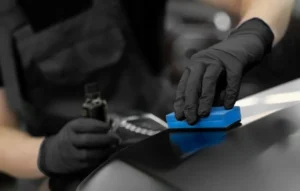Imagine setting aside time for a vehicle inspection, expecting a quick process, only to realize it takes much longer than planned. Whether you’re renewing your registration, buying a used car, or meeting state requirements, knowing how long a vehicle inspection takes can help you plan better and avoid unexpected delays.
On average, most vehicle inspections take 15 to 60 minutes, depending on the type of inspection, your location, and your vehicle’s condition. A simple safety or emissions check may take just 15-30 minutes, while a comprehensive inspection can last an hour or more. Additionally, factors like local regulations, inspection facility workload, and even newer scanning technologies impact the time required.
“In this guide, we’ll break down the key factors affecting vehicle inspection durations in different regions, helping you set realistic expectations for how long does a vehicle inspection takes and prepare effectively. Keep reading to learn what to expect for your next inspection.”
Table of Contents
ToggleUnderstanding Vehicle Inspections
A vehicle inspection is an official assessment that ensures a vehicle meets road safety and environmental standards. These inspections vary by location and purpose, helping maintain safe driving conditions and reduce harmful emissions.
What is a Vehicle Inspection?
A vehicle inspection is a mandatory or voluntary check-up performed by certified professionals to assess a vehicle’s roadworthiness. The primary purpose is to ensure safety, confirm compliance with environmental regulations, and identify potential mechanical issues before they become serious. Depending on your region, an inspection may be required for vehicle registration renewal, buying or selling a used car, or after a major accident repair.
Types of Vehicle Inspections
Safety Inspections
These inspections focus on critical components such as brakes, tires, lights, steering, suspension, and seatbelts. The goal is to ensure vehicles operate safely on the road.
Emissions Inspections
Also known as smog tests, emissions inspections check for pollutants released by a vehicle’s exhaust system. These tests help control air pollution and comply with environmental regulations.
Comprehensive Inspections
A comprehensive vehicle inspection includes both safety and emissions checks, providing a full assessment of a vehicle’s overall condition. It is commonly required during vehicle registration, before resale, or after an accident.
Factors Influencing Inspection Duration
The time required for a vehicle inspection varies based on several factors, including the type of inspection, regional regulations, vehicle condition, and the efficiency of the inspection facility.
Type of Inspection
- Safety Inspections: Typically take 15-30 minutes as they focus on mechanical components.
- Emissions Inspections: Generally completed in 10-20 minutes, depending on test complexity.
- Comprehensive Inspections: Can last up to 60 minutes due to detailed assessments.
Regional Regulations
United States
Vehicle inspection laws vary by state. For instance, as of January 2025, Texas no longer requires annual vehicle inspections for most personal vehicles, potentially saving residents both time and money (mysanantonio.com). Other states like California maintain strict smog check requirements.
United Kingdom
The UK requires an MOT test for most vehicles over three years old. These inspections take around 45-60 minutes and include checks on lights, brakes, emissions, and structural integrity.
Canada
Each province has different regulations. For example, Ontario requires Drive Clean emissions tests for certain vehicles, while British Columbia mandates annual inspections for commercial vehicles.
Australia
Inspection rules differ by state and territory. New South Wales and Queensland require roadworthy inspections for vehicle registration, whereas Western Australia only mandates inspections for newly registered or defected vehicles.
Vehicle Condition
A well-maintained car passes inspections faster, while older or poorly maintained vehicles may require additional checks, repairs, or re-testing.
Inspection Facility Efficiency
Advanced technology, such as UVeye’s AI-powered scanning system, can inspect a vehicle in as little as 20 to 30 seconds, significantly reducing wait times at certain facilities.
How Long Does a Vehicle Inspection Take: Average Time
The time required for a vehicle inspection depends on the type of assessment being performed. While some inspections take only 15-20 minutes, more comprehensive evaluations can last up to an hour or more.
Safety Inspections (15-30 minutes)
A standard safety inspection focuses on brakes, lights, tires, steering, and other critical components to ensure roadworthiness. These checks typically take 15-30 minutes, depending on the complexity of the vehicle and the efficiency of the inspection station.
Emissions Inspections (15-20 minutes)
Emissions inspections, also known as smog tests, evaluate the amount of pollutants a vehicle emits. These inspections typically take 15-20 minutes and involve connecting the car to specialized diagnostic equipment to measure exhaust emissions. The process can be quicker for newer vehicles with cleaner engines but may take longer if retesting is required.
Comprehensive Inspections (30-60 minutes)

A comprehensive vehicle inspection includes both safety and emissions testing, along with an in-depth mechanical evaluation. These inspections generally take 30-60 minutes, especially when additional diagnostic tests are needed for older or high-mileage vehicles.
Technological Innovations Reducing Inspection Times
Advancements in automated inspection systems are helping reduce wait times. AI-driven scanners, such as UVeye’s technology, can complete a vehicle inspection in just 20-30 seconds. These systems use high-speed cameras and sensors to detect defects in tires, brakes, undercarriage, and exterior panels. While not widely available yet, such innovations are improving efficiency in regions where they have been implemented.
Regional Case Studies
The duration and requirements of vehicle inspections vary significantly by country and state. Below are case studies of different regions and how their inspection processes impact drivers.
United States
Texas: Eliminating Mandatory Inspections (2025)
In January 2025, Texas officially removed mandatory annual vehicle inspections for non-commercial vehicles. This change is expected to save drivers an estimated $7.50 per year, but some critics argue it may lead to more unsafe vehicles on the road (mysanantonio.com). However, emissions tests are still required in certain counties, meaning some drivers must continue scheduling inspections.
United Kingdom
MOT Test: Standard Duration and Common Findings
In the UK, vehicles over three years old require an annual MOT (Ministry of Transport) test, which takes approximately 45-60 minutes. Common failures include faulty lights, worn-out brakes, and excessive emissions. If a vehicle fails, the owner must complete necessary repairs before legally driving again.
Canada
Ontario: Drive Clean Program Specifics
Ontario’s Drive Clean program, which previously mandated emissions testing for most vehicles, was discontinued in April 2019 for light-duty vehicles. However, certain commercial and high-mileage vehicles still require inspections. The process usually takes 20-30 minutes, depending on vehicle age and condition.
Australia
New South Wales: eSafety Check Procedures
In New South Wales (NSW), Australia, a pink slip (eSafety check) inspection is required annually for vehicles over five years old before registration renewal. This check takes 30-40 minutes and ensures compliance with road safety and emissions regulations. If the vehicle fails, repairs must be completed before re-inspection.
Tips to Expedite Your Vehicle Inspection
A smooth and quick vehicle inspection depends on proper preparation. By following key steps, you can minimize delays and ensure your vehicle meets all requirements.
Preparation Steps
Before heading to an inspection center, conduct a basic check of your vehicle. Ensure that:
- Fluids (engine oil, coolant, brake fluid) are at proper levels.
- Lights (headlights, brake lights, indicators) are fully functional.
- Tires have proper tread depth and are free from damage.
- Wipers, seat belts, and emissions system are in good condition.
Documentation
Having the right paperwork can save time and prevent unnecessary delays. Commonly required documents include:
- Vehicle registration
- Insurance proof
- Previous inspection reports (if applicable)
Scheduling
Choosing the right time and location can significantly reduce waiting times. To avoid long lines:
- Visit inspection centers during off-peak hours (early mornings or mid-week).
- Book an appointment if available to secure a spot.
- Avoid last-minute inspections before registration deadlines.
With these proactive steps, you can speed up the process and ensure a hassle-free experience.
Conclusion
The time required for a vehicle inspection varies based on the type of check, regional regulations, and the condition of the vehicle. While safety and emissions tests may take as little as 15-30 minutes, a comprehensive inspection can extend up to an hour or more.
Proper preparation plays a crucial role in ensuring a fast and efficient inspection. Conducting a pre-check of your vehicle, having the necessary documentation, and scheduling wisely can significantly reduce delays. Additionally, technological advancements are helping streamline the inspection process, with some AI-powered systems completing scans in seconds.
To stay compliant, keep track of your local inspection laws and ensure your vehicle meets all required standards. Whether you’re renewing registration or verifying roadworthiness, being well-prepared ensures a smoother and faster experience at the inspection center.
You Might be Interested: How Long Does the Home Inspection Take? Step-by-Step Process
FAQs
What is the primary purpose of a vehicle inspection?
Vehicle inspections aim to ensure that vehicles meet safety and environmental standards, preventing accidents and reducing harmful emissions.
How often should I have my vehicle inspected?
Inspection frequency varies by region. Some areas mandate annual checks, while others may require inspections biennially or upon vehicle sale. Always consult local regulations to determine specific requirements.
What components are typically checked during a vehicle inspection?
Inspections usually assess brakes, tires, lights, steering, suspension, and emissions systems to ensure proper functionality and compliance with safety standards.
Are vehicle inspections mandatory everywhere?
No, requirements differ by location. For example, Texas eliminated mandatory safety inspections for non-commercial vehicles starting January 2025, though emissions testing remains in certain counties.
What happens if my vehicle fails the inspection?
If your vehicle doesn’t pass, you’ll need to address the identified issues and undergo a re-inspection. Some regions offer a grace period for repairs, while others may impose restrictions until compliance is achieved.













